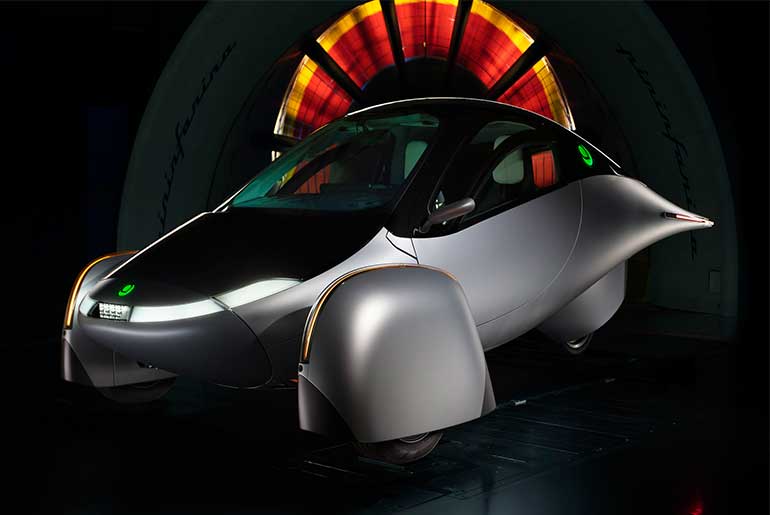The California business will eventually unveil the production-ready version of its three-wheeled solar EV after several delays.
A solar-powered electric car that can travel the daily commute without ever needing to be plugged in to recharge has long been a promise of Aptera. Now that the California startup is prepared to reveal the three-wheeled EV’s production-intent version, that promise is closer than ever.
The event will be webcast live on the company’s YouTube page. The firm is now closer than ever to beginning consumer deliveries later this year, which is excellent news.
Originally scheduled to begin production in 2021, Aptera anticipated selling over 10,000 of the two-seater EV by 2023. But it never did. Due mostly to a lack of funding, the timeframe was changed several times, and the original design was also marginally altered.
The slippery EV was supposed to be provided with in-wheel motors from Elaphe, but Vitesco’s more traditional in-board motor was chosen instead. An inverter, a reducer, and a permanent-magnet synchronous motor are all combined into one EMR3 drive unit. Theoretically, this won’t have an impact on Aptera’s range claims because the Launch edition of the solar EV is still listed as having 400 miles on a full charge on the company’s website.
According to the California startup, this most recent production-intent prototype will include all the features a future owner would want, including full solar integration, entertainment, climate control, and a vision system. Another production-intent prototype was unveiled at the start of the year, followed by the first completely functional solar electric validation car. With manufacturing tooling used to create the vehicle’s fibreglass and carbon-fibre panels, that one was almost ready for production. However, the injection-moulded interior parts and the die-cast metal suspension arms were not up to manufacturing standards.
“We’ve been preparing for this moment,” Chris Anthony, Aptera’s co-CEO, stated. “This vehicle is constructed according to the design that we intend to manufacture in large quantities and provide to our eager reservation holders.”
All Aptera solar EVs will use LG batteries that can be charged using the body’s solar array and a NACS port created by Tesla. According to the business, the $40,000 launch edition has a solar array that covers the entire upper portion of the EV, giving it a daily range of up to 40 miles under perfect circumstances. We don’t yet know when the additional, much more varied versions will be available for purchase.
“Almost every circuit, piece of software, and firmware is designed entirely in-house, with very few exceptions,” stated Steve Fambro, Aptera’s co-CEO. “Aptera’s own tightly integrated hardware and software stack includes everything from the solar panels and charge controller to the car computers and battery management system. Together, all the components provide unmatched energy efficiency.” “In addition to being strong and stylish, the system was designed specifically to support our incredibly effective architecture.”
Later this summer, the production-intent validation vehicle will travel across the country when it is unveiled. Following the journey, the business pledged to demonstrate the solar EV’s practical efficiency.
Prospective buyers can reserve a launch edition solar EV by placing a $100 deposit on the company’s website, where pre-orders are currently open. However, Aptera has a fast-track system in place that allows clients to accept priority delivery if they pay $5,000 or more if patience isn’t your thing. After the first 2,000 EVs are delivered to investors who made their initial investment, these orders will be fulfilled.

